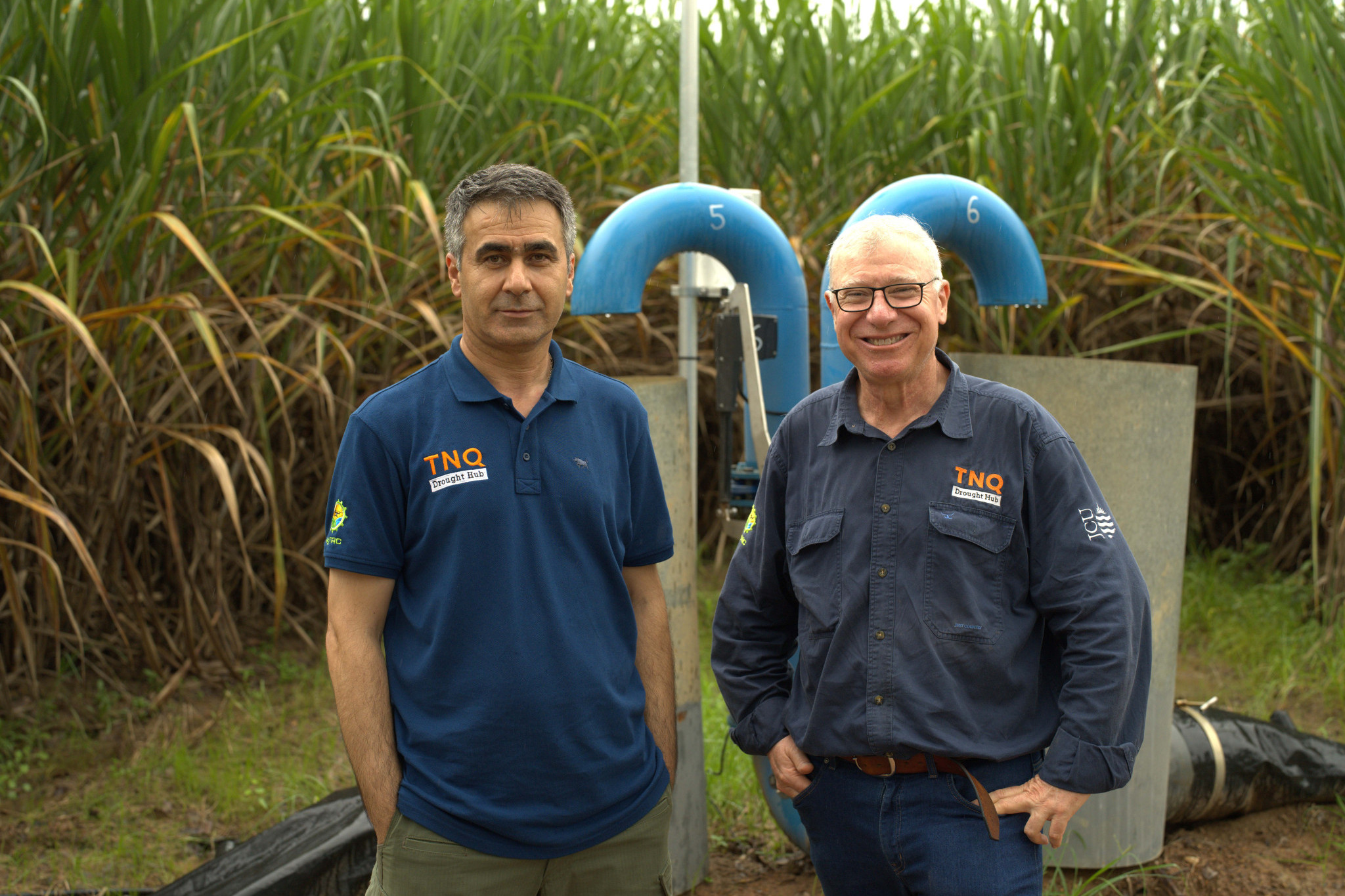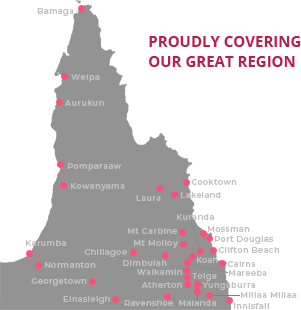On The Land
17 April, 2025
Irrigation technology gets put to the test
AN innovative irrigation demonstration has begun in Dimbulah which aims to improve water and energy efficiency in sugar cane, reduce labour costs and create a more sustainable farming practice.

The irrigation automation toolkit combines irrigation automation hardware, crop growth modelling solutions, real-time energy usage tracking and a unified data platform, all designed to provide farmers with precise irrigation control and reduce operational costs.
Salvetti Farming farm manager Jason Salvetti said when the opportunity presented itself to test the toolkit on his farm, he was keen to get it up and running.
“I’ve always been interested in technology and computers, and we started off with some basic systems like weather stations and soil moisture probes, and then the next step was to try and start some automation processes on the farm,” he said.
“Our home farm is about a 20-minute drive from here, and on the flood irrigation systems, we would come out here anytime between two and three times a day.
“The advantage of this technology is that it will basically do those trips for us, in that it will change the irrigation valving required to move to the next irrigation set by itself, without anyone having to be around to do it.”
The toolkit, which began in the Burdekin, was designed through a number of collaborations, one of which being James Cook University (JCU), which is home to the Tropical North Queensland Drought Resilience Adoption and Innovation Hub (TNQ Drought Hub).
TNQ Drought Hub director, Professor David Phelps, said the hub was building on the success of the previous trial through the Dimbulah site to highlight the importance of data-driven irrigation practices in the face of increasing climate variability.
“In 2025, we have seen a record-breaking wet season, and this technology can take into account moisture levels in the soil, to deliver the amount of water needed through more precise irrigation scheduling to maximise crop growth and conserve water for when the farms need it,” he said.
“This really shows how farms can become more resilient heading into a drought, as we know, it’s not ‘if’ but ‘when’ the next drought arrives.
“In this situation, we’re trying to take technologies that have worked really well in the Burdekin sugarcane production area, up to the Atherton Tablelands, and iron out the local issues.
“An integrated system that’s detecting both how much moisture is in the soil, the growth rate and the productivity of the cane and adjusting the watering schedule, whether that be turned on and off manually or in an automated sense, is going to help save water.”
AgriTech Solutions Irrigation Agronomist and managing director Steve Attard is supervising the technological implementation in Dimbulah.
Mr Attard said many farmers lacked precise insights into their water usage, cost and whether it met their crops’ specific needs.
“If we can reduce costs and energy without negatively impacting productivity, then we know that profitability is going to increase,” he said.
“We understand very similar processes are used in the Tableland region, and so there was no reason why this technology, wouldn’t translate to making benefits for farmers around energy costs and water costs in those regions.
“The natural thing to do then was to set up a local demonstration site through the TNQ Drought Hub to showcase the type of technology and hopefully to inform other farmers and advisers about the possibilities that this technology can bring them.”
Professor Phelps believes that with continued success, the toolkit could redefine water management practices across multiple crop types, contributing to long-term drought resilience and productivity growth for agricultural communities.
“As this technology continues to deliver results, we have a unique opportunity to reshape water management practices across various crops and regions,” he added.
“It all comes back to our mission at the hub of supporting projects that build resilience within local communities.
“By investing in innovative technology like this, we’re equipping farmers and producers with the tools to adapt, thrive, and contribute to the sustainability of the agricultural industry well into the future.”


